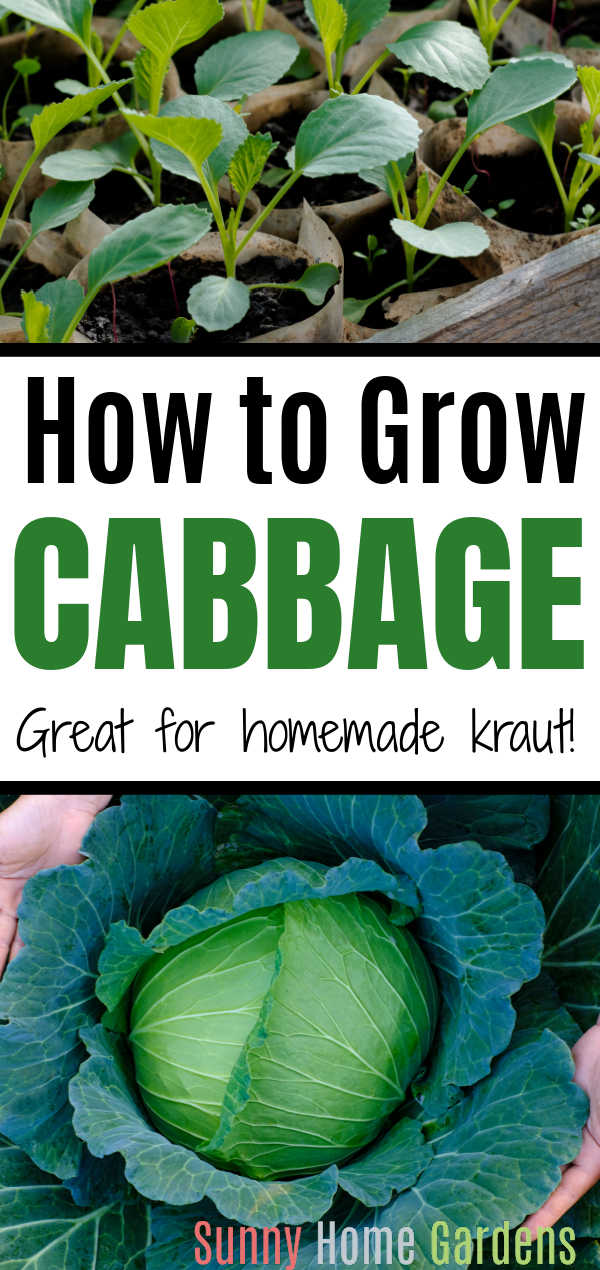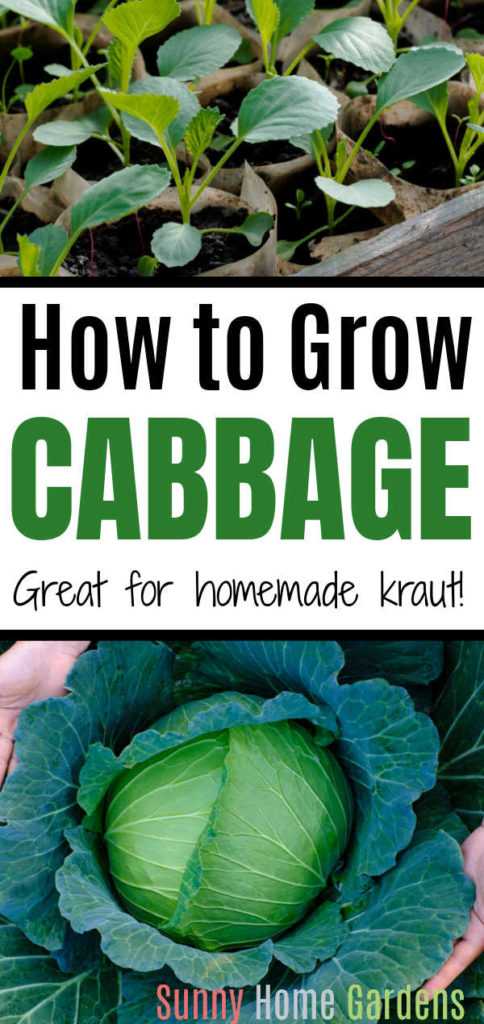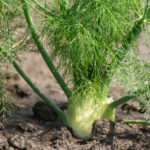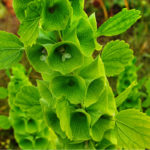Learn how to grow cabbage from seed, how to tell when the cabbage head is ready to harvest and how to harvest.
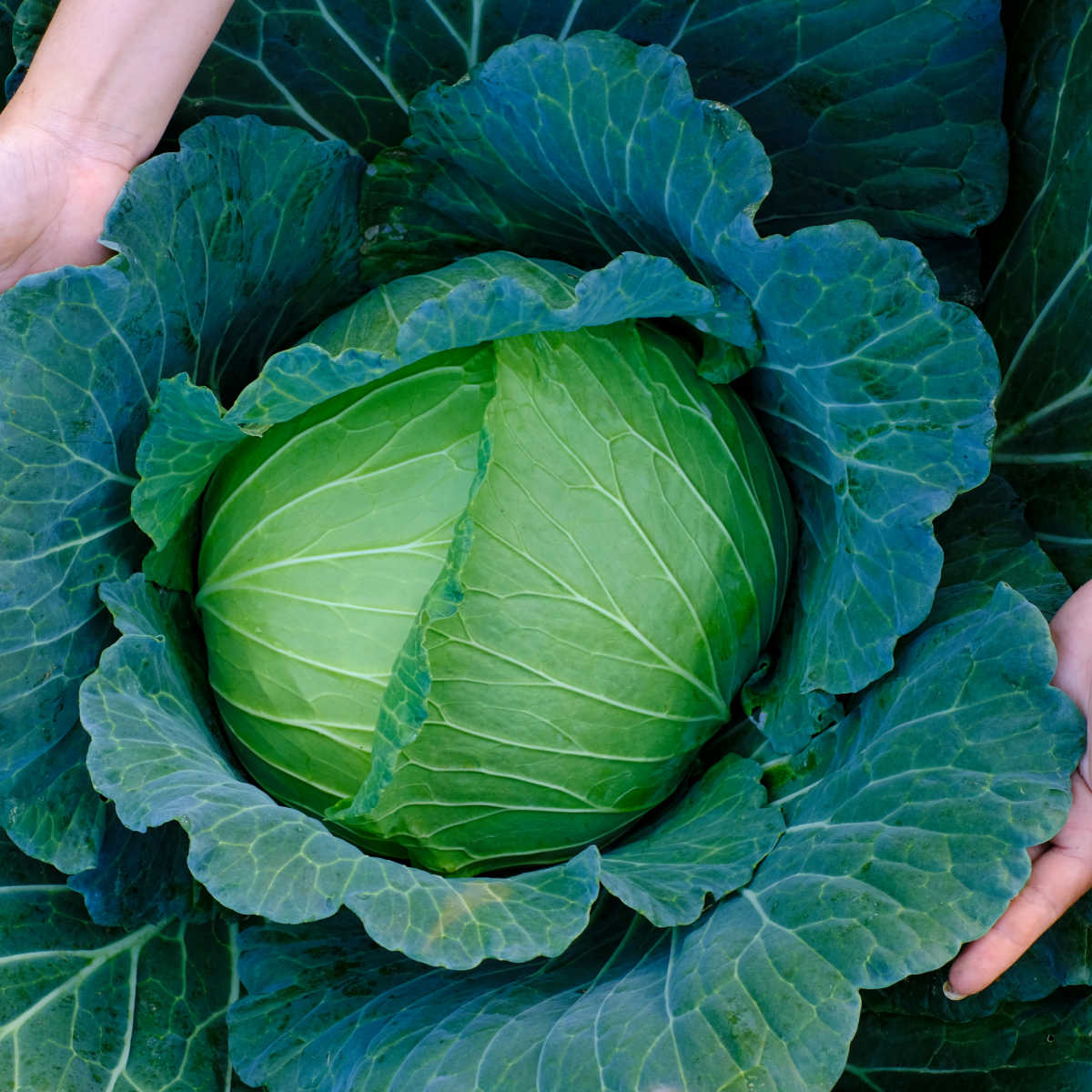
Cabbage is one of those foods you either love or hate.
Some can’t stand the mere smell of it, let alone eat it. Others can eat it weekly with ham or sausage and adore the flavor.
No matter how you feel about it, learning how to grow cabbage in your vegetable garden is as simple as cooking cabbage can be. Whether you love the taste of cabbage or you don’t, there is no denying that it is packed with health benefits.
Cabbage is full of nutrition, including being an excellent source of vitamin K, vitamin C, manganese, vitamin B6, and more.
It may also help to reduce inflammation in the body, lower high blood pressure, and lower cholesterol. Finally, cabbage is a fantastic source of antioxidants and fiber.
Table of Contents
When to Plant Cabbage
For most gardening zones, cabbage can be grown in both spring and fall gardening seasons.
If you are planting a spring crop, you will want to have your cabbage planted around four weeks before the average last frost date. This will ensure your cabbage has time to mature before harvest.
Cabbage as a fall crop should be planted at least six weeks before the first frost of the year.
In doing so, you will allow them to harden against colder temperatures so they can thrive.
Cabbage planted in fall versus spring will have slightly different flavor profiles.
Fall cabbage which hardens and grows in colder weather is known to be somewhat sweet. Spring cabbage has a more tart flavor profile.
How to Plant Cabbage
You can either direct sow cabbage seeds into the spot you plan to grow your cabbage in or your can start your seeds indoors and transplant them.
Directly Sow Cabbage Seeds
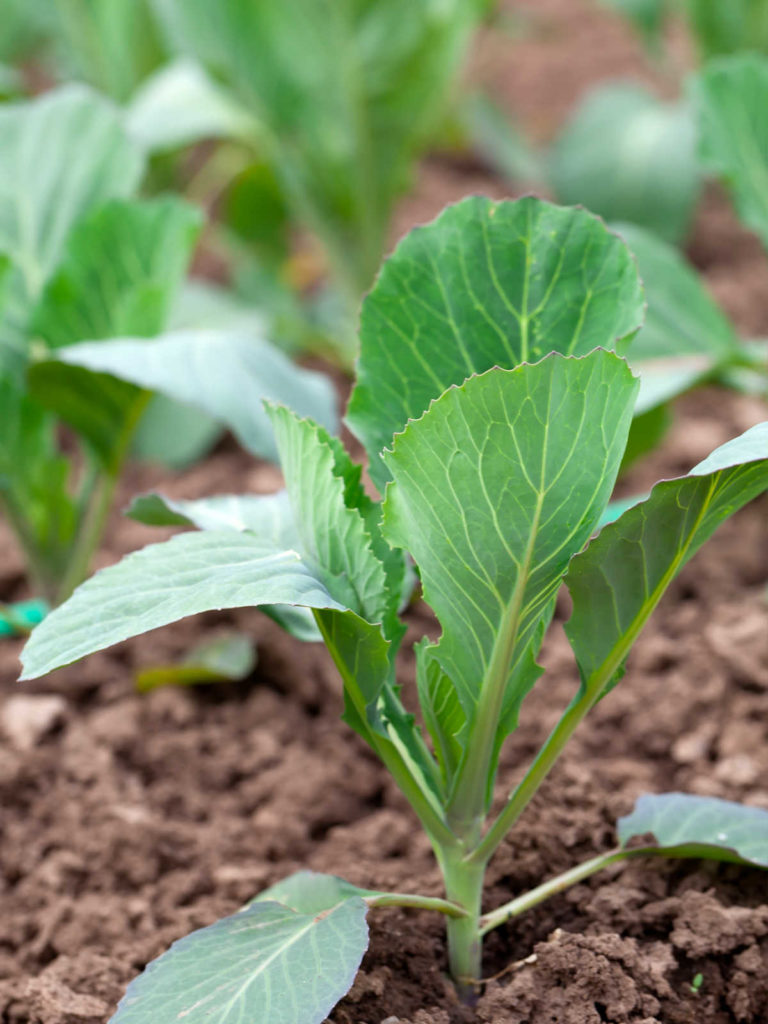
Cabbage can be directly sown into the area you plan to grow it.
Just plant the cabbage seeds about 1/2″ deep, making sure to keep the spacing between each planted seed about an inch apart if you plan to thin them or you can plant them about 18 inches apart.
Make sure to gently water the seeds after planting them. You want to try and keep the soil moist until the seeds germinate.
How to Start Cabbage Seeds Indoors
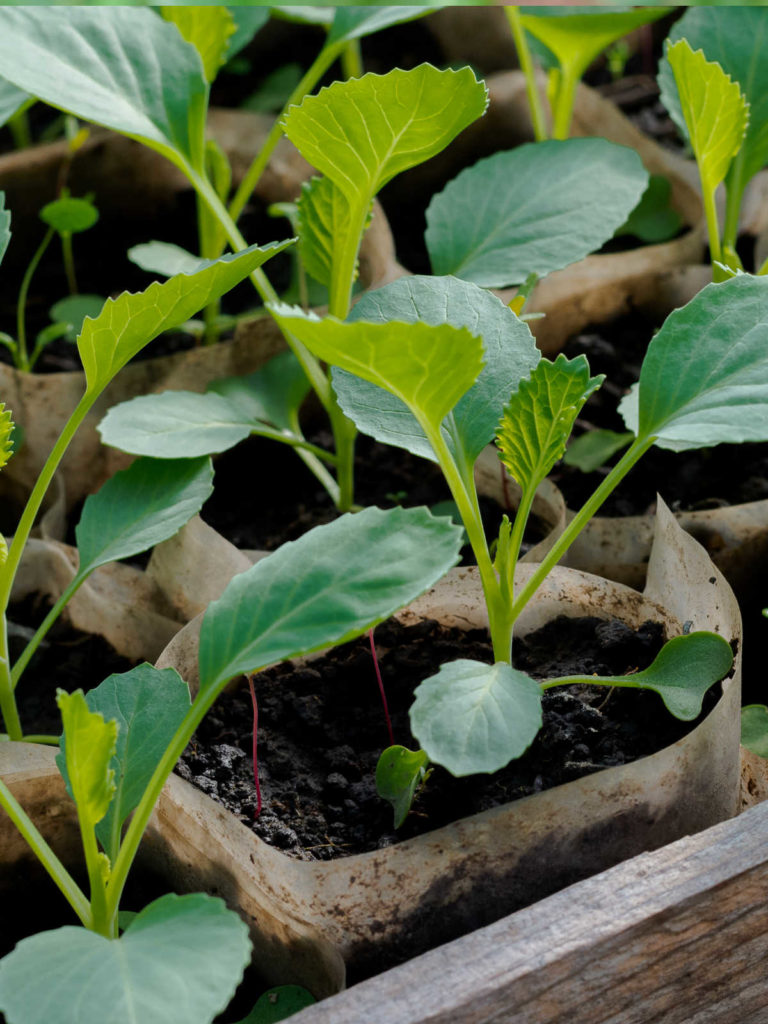
If you plan to start cabbage seeds indoors then plant about 1/2″ deep in a planting tray.
Water gently after planting and you’ll want to keep the soil moist.
How to Transplant Cabbage Starts
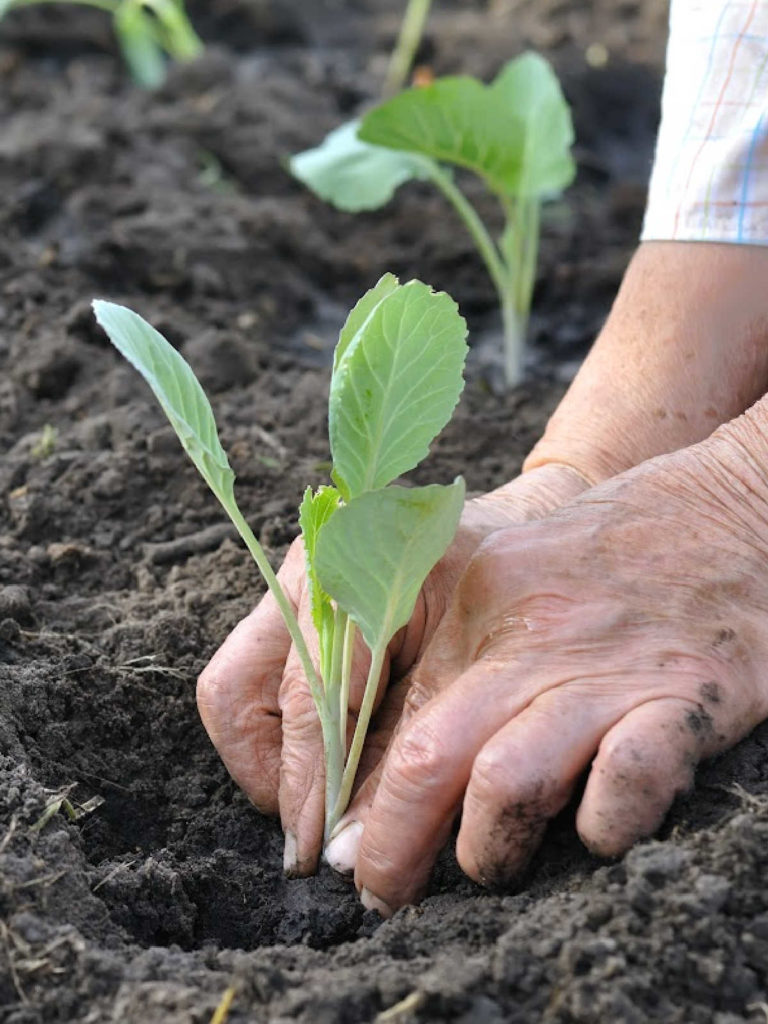
Cabbage is incredibly easy to transplant. New starters should be planted with 1-2” of their root buried. Since cabbage plants can grow quite large, they should also be planted in rows that are 12-24” apart.
Space will allow your cabbage to grow as it needs without worrying about other plants getting in the way.
After you have transplanted the cabbage starts, you should water them well. Cabbage requires constant and even moisture due to the size they grow to.
While they are sun-loving plants, their root systems should be kept cool to ensure proper growth. Watering your cabbage around 1 ½” each week can help keep the roots at the temperature they need to be.
In addition, the use of mulch, finely ground leaves, or even compost laid around the root areas will also help keep the root system cool without taking necessary sunlight from the plant itself. In addition to consistent watering, cabbage plants should be fertilized as soon as they grow leaves. This is due to their size and assists them in staying strong.
Sun and Soil Requirements
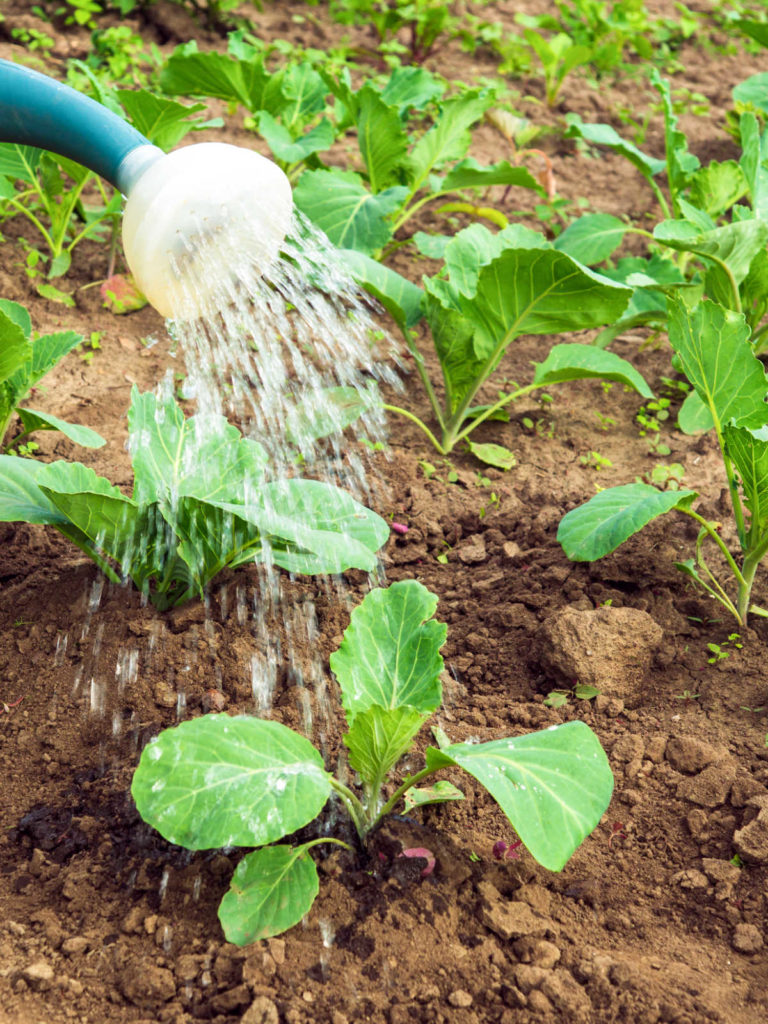
Cabbage should be planted in an area that receives full sun for six or more hours per day.
They also do best in soils that have a PH reading of 6.5 to 6.8. If you are not sure of the PH readings of your soil, you can test your soil using a soil PH kit.
Because cabbage plants can be susceptible to root diseases, you will also need to ensure the ground where you plant is well-drained.
If the soil you are planting in is not as fertile as you would like, this can be easily fixed by mixing organic compost into the ground. A good ratio of compost to the soil is ⅔ soil to ⅓ compost.
Adding compost will help to ensure the earth has the nutrient balance it needs to grow healthy plants.
How to Harvest Cabbage
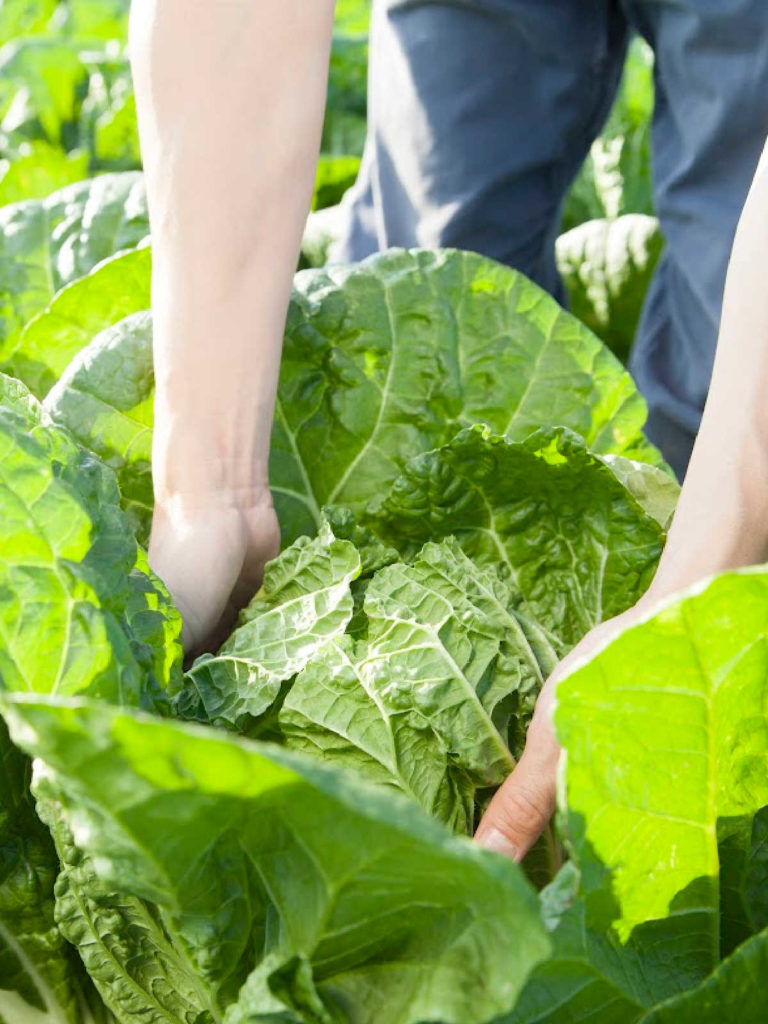
It is a common misconception that cabbage is mature when the head grows large leaves.
However, it is essential to note that a cabbage plant can appear mature without actually being so. A genuinely mature head of cabbage will have leaves and have a firm head with tight leaves in the center.
The easiest way to test cabbage for maturity is to squeeze the center of the head. If the head does not feel firm, leave it alone for a bit longer to fully mature. However, if the head feels firm or cracks open, harvest it by taking a sharp knife, clippers or even a saw and cutting the head off at the base and pull off the large cabbage leaves around the cabbage head off.
If you do not want to harvest your cabbage right away, it is perfectly fine to leave it in the ground for a bit of extra time. This will change the plant itself, however. Instead of one large plant, it will split off into multiple small cabbage heads. These can be great for serving as individual cabbages depending on the recipe you are using.
Cabbage is likely one of the simplest plants you can grow in your garden. Once they are planted, they pretty well want to be left alone. Provided you keep your cabbage plants well-watered, pest-free, and give them plenty of sun, they will grow into the healthy, flavorful vegetable you have grown to love.
If you found this helpful, I’d love for you to “PIN IT“!
